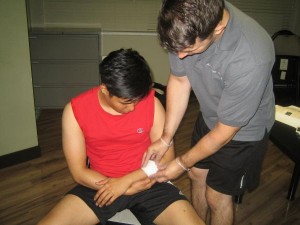
Vaginitis is a medical term used to describe a range of conditions that involves the inflammation or infection of the vagina. It leads to foul-smelling discharge and itchiness and pain in the vaginal area. These are primarily caused by fungal infection but can also be caused by other microorganisms. Certain sexually transmitted diseases (STDs) can also lead to vaginitis. It is a highly common condition, especially in women with diabetes. Treatment will depend on the underlying cause.
The vagina is the muscular canal extending from the cervix to the external of the body, typically about six to seven inches in length. Mucus membranes line the vaginal walls. It is the main organ for sexual intercourse. The vagina refers only to the internal structure, whereas the vulva, clitoris, etc. are the external structures. Certain types of vaginitis can be spread through partners.
What are the Types and Causes of Vaginitis?
There are several different types of vaginitis, each with varying causes. It is necessary to determine the cause of vaginitis
- Yeast vaginitis: usually due to Candida albicans, a type of fungi
- Certain medications, such as antibiotics and steroids
- Hormonal changes
- Unmanaged diabetes
- Bacterial vaginosis: caused by overgrowth of one of the several bacteria in the vagina
- Having multiple sex partners or a new partner
- Smoke
- Trichomoniasis vaginal infection: STD caused by Trichomonas vaginalis, a parasite
- Chlamydia vaginitis: another type of STD
- Viral vaginitis
- Vaginal atrophy: caused by decreased oestrogen levels after menopause
- Non-infectious vaginitis: due to chemical irritation
- Products that cause an allergic reaction to the vagina tissues
What are the Symptoms of Vaginitis?
Symptoms of vaginitis will depend on the underlying cause. It is possible for a person to show no symptoms at all, however, the most common symptoms of vaginitis include:
- Unusual vaginal discharge with unpleasant odour
- Change in color, odour or amount
- Bacterial vaginosis: grayish-white, fish-like smelling discharge
- Yeast infection: thick, white discharge, similar to cottage cheese
- Trichomoniasis: greenish yellow, frothy discharge
- Burning paid during urination
- Itching or irritation around the outside of the vagina
- Discomfort during intercourse
- Light vaginal bleeding or spotting
How is Vaginitis Treated and Managed?
Similarly, treatment will also depend on the cause. If one is unsure of the cause, it is better to seek medical advice to get the proper diagnosis. If cause is certain, treatment can be given effectively.
- Wear cotton or cotton-lined underwear to allow more air to circulate around the genitals.
- Stop douching if it causes pain or symptoms worsen.
- Apply a cool compress or washcloth on the vagina to reduce discomfort.
- Applying cortisone cream may limit inflammation but will not treat the infection.
- If vaginitis is caused by bacteria, oral antibiotics should be taken.
- For vaginitis caused by yeast vaginitis, antifungal creams or ointments may be applied topically.
- If vaginitis is caused by an allergic reaction, take antihistamines.
- Consider oestrogen therapy.
Disclaimer: This information from this article should not serve as substitute for medical diagnosis or treatment. To learn how to manage symptoms of vaginitis and other body irritations, enrol in First Aid Courses.
